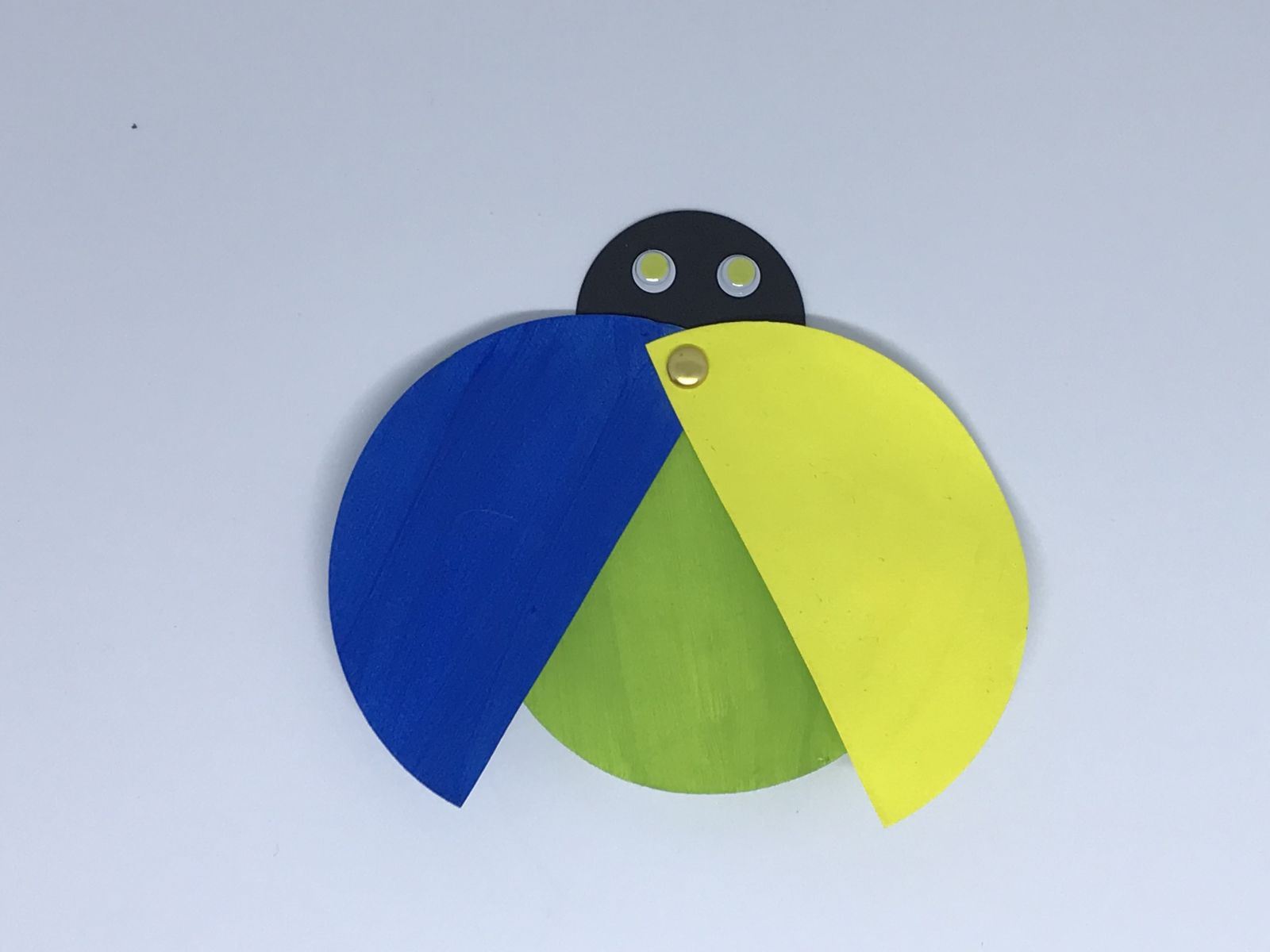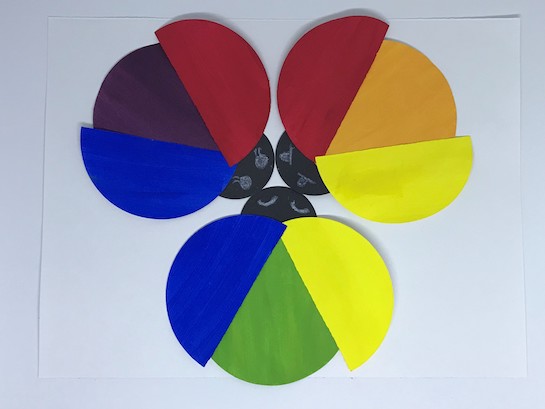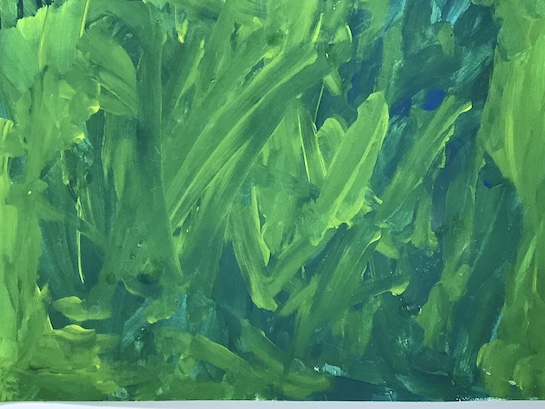Students mix primary colors to create a secondary color palette then work with shapes to redesign a familiar image. Recommended for Kindergarten.
Color: an element of visual art; the visible range of reflected light. Color has three properties: hue, value, and intensity.
- Primary Colors: the basic colors from which all other colors are mixed: traditionally, red, yellow, and blue; no other colors can be mixed to make primary colors.
- Secondary Colors: colors that are created by mixing two primary colors together in equal parts: green, violet, and orange.
Shape: a two-dimensional (flat) area enclosed by a line.
Color Wheel: colors arranged in a circle to show color relationships.
Precut six 4" diameter watercolor paper circles for each student. Three of these circles will be cut in half to create the bug wings. Hole punch the bodies and wings in advance for the brads to be inserted.
Let’s discuss the color wheel! There are 3 primary colors .All other colors are made from these 3 colors: Red, Yellow, and Blue.
Today we will be creating Secondary colors. What are the colors of the rainbow? Red, Orange, Yellow, Green, Blue, Indigo/Violet (we will call this Purple for Kindergarten purposes).
How do we make Orange? By combining red and yellow. Red and Yellow are the Primary Colors and Orange is the secondary color that is created by them.
How do we make Green? By combining blue and yellow. Blue and Yellow are the primary colors and green is the secondary color they create.
Finally, how do we create purple? By combining red and blue. Red and blue are the primary colors and purple is the secondary color they create. All of the colors together complete the rainbow and also the color wheel for today's lesson.
Students should be able to name the 3 primary colors.
Students should be able to name secondary colors and what two primary colors make each of them. Students have mixed primary colors to create secondary colors.







Lesson written by Laurelle Graves, Art Docent Program Coordinator, Apollo Elementary School.
21st Century Thinking Skills
Creating, observing, making connections, sequencing, predicting, comparing/contrasting, cause and effect, synthesizing.
WA State Learning Standards
(VA:Cr1.1.K) a. Engage in exploration and imaginative play with materials.
(VA:Cr1.2.K) a. Engage collaboratively in creative art-making in response to an artistic problem.
(VA:Cr2.1.K) a. Through experimentation, build skills in various media and approaches to art-making.
(VA:Cr2.2.K) a. Identify safe and non-toxic art materials, tools, and equipment.
(VA:Cr2.3.K) a. Create art that represents natural and constructed environments.
(VA:Cr3.1.K) a. Explain the process of making art while creating.
(VA:Re7.2.K) a. Describe what an image represents.
(VA:Re8.1.K) a. Interpret art by identifying subject matter and describing relevant details.
Please note: These lesson plans are intended for non-profit use only. Use of these plans for commercial purposes should give attribution to the Issaquah Schools Foundation and be accompanied by a nominal donation at www.isfdn.org/donate. Thank you.
Fueling Success for Every Student, Every School